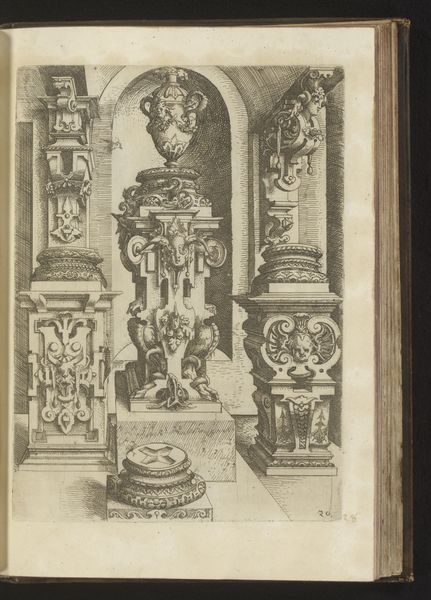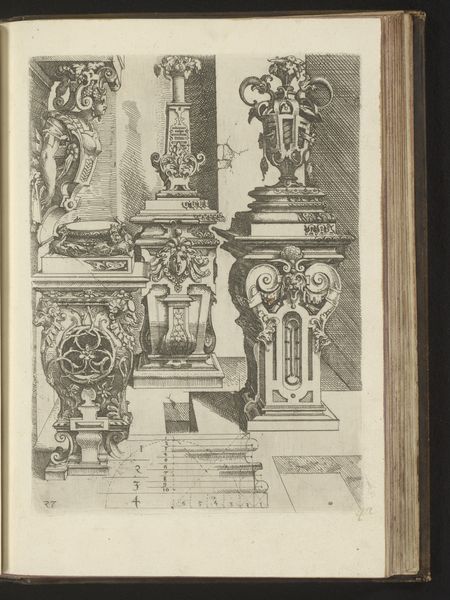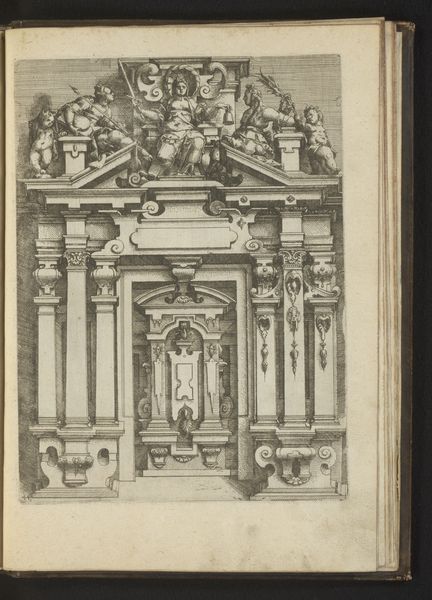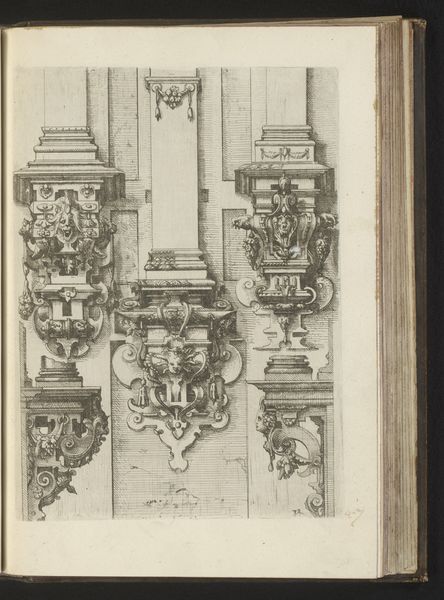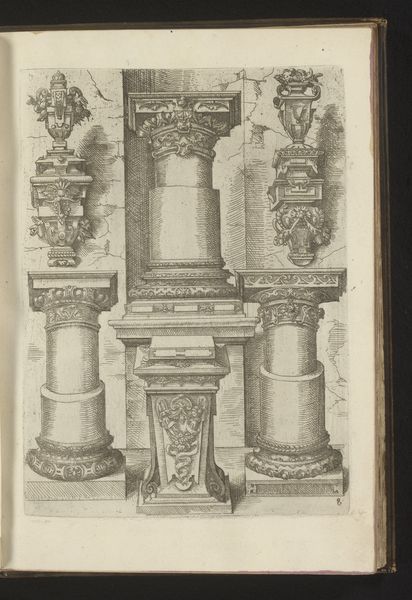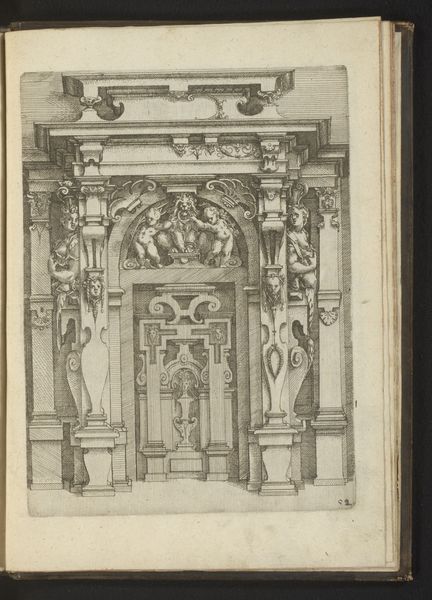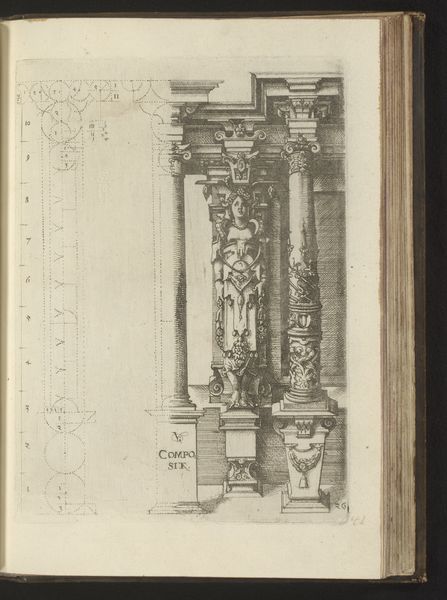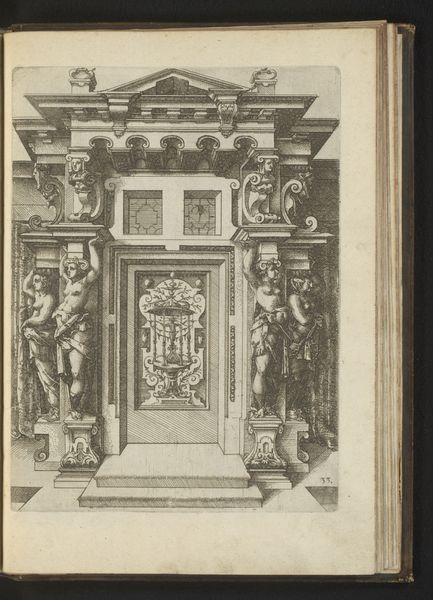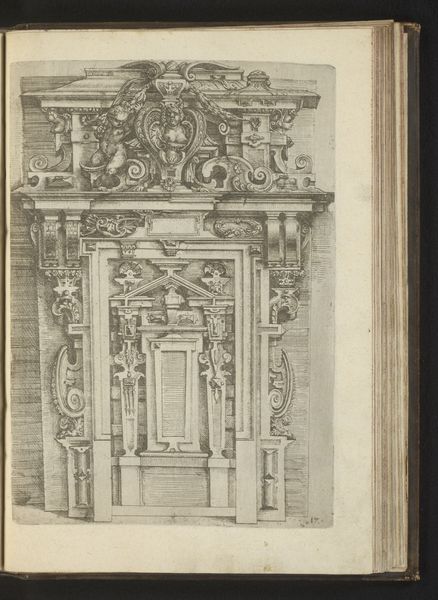
Vijf Ionische kapitelen, twee Ionische piëdestals, gedecoreerd met rolwerk, twee consoles en twee bekroningen 1593 - 1595
0:00
0:00
drawing, print, ink, engraving, architecture
#
drawing
#
pen drawing
# print
#
form
#
11_renaissance
#
ink
#
geometric
#
line
#
history-painting
#
academic-art
#
engraving
#
architecture
Dimensions: height 252 mm, width mm
Copyright: Rijks Museum: Open Domain
Editor: This intricate pen and ink drawing by Wendel Dietterlin, created between 1593 and 1595, showcases five Ionic capitals, pedestals, consoles, and finials. I'm struck by the precision of the linework; it seems to emphasize structure while adding decorative detail. What catches your eye about this print? Curator: The print reveals the material conditions of architectural production in the late 16th century. The detailed rendering suggests a knowledge intended to be put into practice: a set of models offered to builders and patrons for implementation. The line work you admire signifies not just precision, but a certain standardized procedure for architectural crafts—an almost proto-industrial approach where aesthetic value merges with the efficiency of material reproduction. The architectural "elements" signify their interchangeability, almost. Don't you think? Editor: That’s interesting – thinking about the drawing as part of a system of architectural production. So, is the artist drawing attention to that reproducibility? Is this artwork about more than just classical forms? Curator: Absolutely. The act of meticulously engraving or printing multiple copies implies a dissemination of architectural ideas, bringing them to a wider audience, one beyond an aristocratic or ecclesiastic patron class. It turns the act of building, typically viewed as the domain of skilled masons and artisans, into a potentially democratized project, fueled by drawings anyone could interpret. Consider the drawing's role not just as a design, but also as a piece of propaganda! Editor: Propaganda? That makes me look at the drawing very differently, thinking about the printing process and how it might be shaping public tastes and directing resources. Thanks for pointing that out! Curator: Precisely. Considering these drawings as active elements in the 16th century world complicates any simple appreciation of their artistry!
Comments
No comments
Be the first to comment and join the conversation on the ultimate creative platform.
